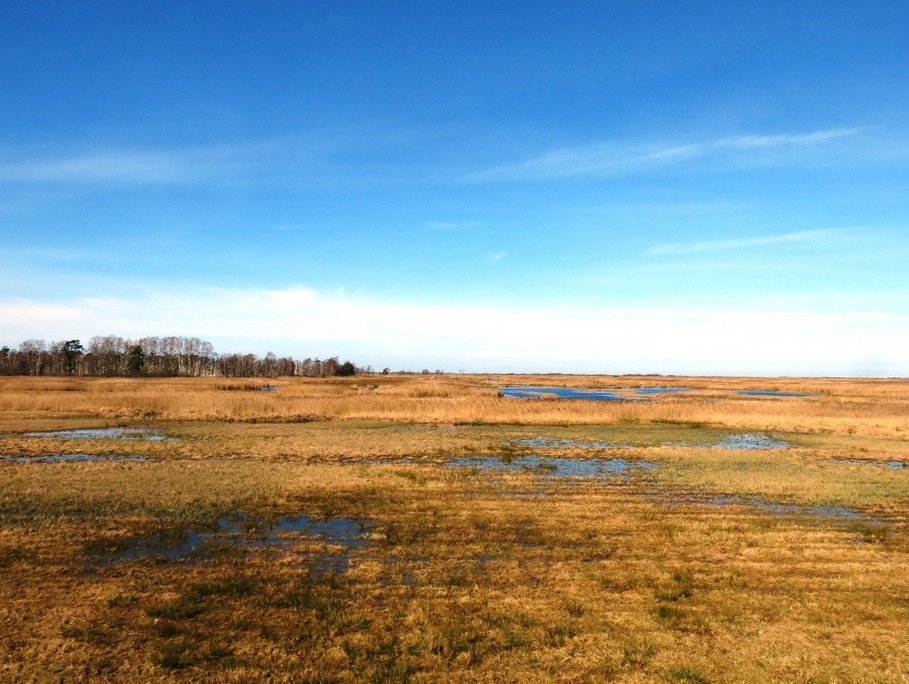Sinks, links and legacies of novel ecosystems in rewetted fen landscapes Project A5: Development and resilience of microbial CH4 oxidizers in rewetted fens | WETSCAPES2.0
Funding: German Research Foundation DFG (Transregio Collaborative Research Centre)
Project period: 2025 - 2028
Project partners:
University of Rostock (coordinator)
University of Greifswald (coordinator)
MPI for Biogeochemistry
Greifswald MIRE Centre
Humboldt University Berlin
LMU Munich
IGB Leibniz Institute of Freshwater Ecology and Inland Fisheries

Wetscapes, landscapes with a high share of water-saturated peatlands, were common in the Pleistocene lowlands around the globe. They provide vital ecosystem services such as carbon (C) sequestration, climate cooling, water purification, protection of surface water bodies from eutrophication, flood control and habitat provision for specialized flora and fauna.
Temperate fens, i.e., minerotrophic peatlands with low acidity and high nutrient content, have been massively drained for agriculture. As a consequence, regions such as NE Germany, which host a significant proportion of Central European fens, face severe ecological consequences, such as greenhouse gas (GHG) emissions, soil subsidence, eutrophication of downstream surface waters, increased vulnerability to flood events, habitat loss, and biodiversity decline.
The vast majority of drained peatlands needs to be rewetted to comply with the Paris Agreement and EU and national policy targets and, indeed, this ‘Great Rewetting’ has begun. But evidence suggests that rewetting does not restore drained peatlands and wetscapes to their original state, but often leads to novel ecosystems with more available nutrients, less resistance to hydrological fluctuations, and different species compositions compared to (near-)natural peatlands. Up to now, rewetting has mainly been implemented for nature conservation, but future large-scale rewetting for climate protection must also involve areas that are currently used intensively for agriculture. Here, new, wet, productive land use - paludiculture - can be established, leading to further modifications in the abiotic and biotic functioning of these landscapes - wetscapes 2.0. Transfer of knowledge from better studied (semi)pristine peatlands to such novel conditions is problematic, but concerted interdisciplinary studies on rewetted peatlands are largely missing. Besides its holistic interdisciplinary approach on rewetted peatlands, WETSCAPES2.0 is innovative for its focus on connectivity of exchange processes within rewetted peatlands and beyond to the wetscapes 2.0. The CRC/Transregio WETSCAPES2.0 will provide a functional understanding of these new wetscapes, and address the spatio-temporal implications of peatland rewetting at landscape level and beyond.
More information on the Collaborative Research Centre WETSCAPES2.0.
One for the WETSCAPES2.0 core sites is Polder Zarnekow which is intensively monitored within the TERENO NE observatory.
GFZ leads project A5: Development and resilience of microbial CH4 oxidizers in rewetted fens
In wetlands, microbial CH4 oxidizers (methanotrophs) determine the emission of CH4 to the atmosphere through soil CH4 uptake. After rewetting of degraded temperate fens, biotic and abiotic drivers on methanotroph community development appear to differ from those in natural wetlands. Project A5 takes a holistic approach on soil methanotrophic research taking into account spatiotemporal links with biogeochemistry and ecosystem CH4 fluxes, the role of yet poorly constrained methanotrophic taxa, and the vulnerability of soil methanotroph communities post-rewetting. The project specifically investigates soil methanotrophic communities and CH4 uptake of rewetted temperate fens in relation to their biotic and abiotic drivers on diverse spatial and temporal scales. It quantifies the role of methanotrophs, including that of anaerobic methanotrophic taxa, through molecular and bioinformatic techniques like -omics and pangenome analysis, through physiological and process studies, and statistical modeling using all experimental levels of WETSCAPES2.0.